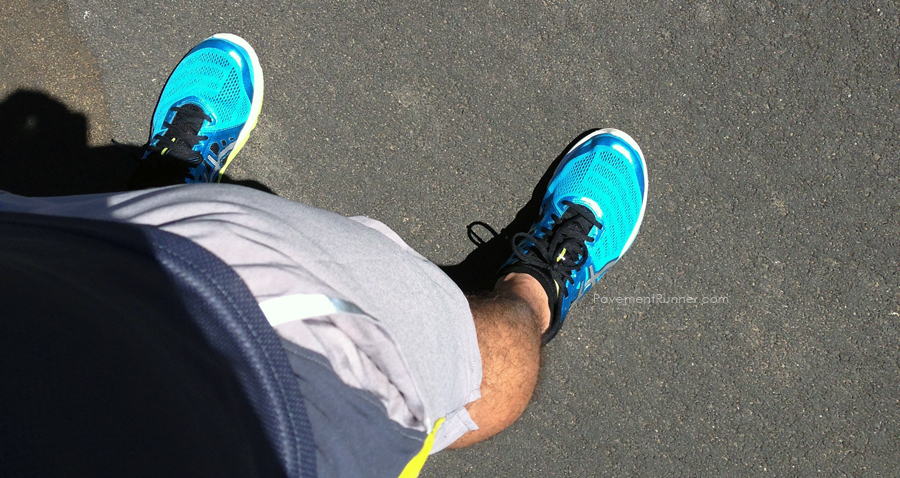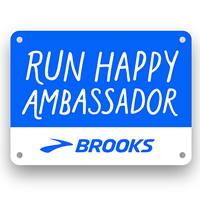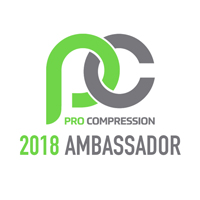If you have ever wondered how I train, it may be a surprise: I just run. I don’t stick to a training calendar and since I live in the Bay Area, I can stay distance-ready throughout the year. But I have a constant struggle between wanting to run further AND wanting to get faster. I know that if I were to find a calendar and follow a training plan, then I could most likely accomplish both — but I want to be able to enjoy my running, enjoy my “me” time and not have it feel like a job. I know. The struggle is real.
Before we get into the psyche that is my brain, I want to direct the conversation back to finding the balance between going further and getting faster. I have not perfected this, but I tend to walk the line between both worlds. Throughout the year, I’ll typically build towards a MAJOR distance, like an ultra or some crazy back-to-back race weekend and also focus on a shorter distance to test my speed. The downfall is that I never fully commit to one for as long as it deserves.
The other side-effect is how this battle plays out in my shoe closet. Distance shoes, speedy shoes, distance shoes that are lighter for speed, speedy shoes that have stability for distance… it’s a lot going on. It’s no secret that my go-to shoe for marathons is the ASICS Kayano, it has taken me to the finish line of 25 out of my 26 marathons. But when it comes to training, you’ll typically find me in a different shoe depending on what I’m looking to accomplish that day. If I’m going for speed, you’ll find me in a lighter shoe. If I’m going for distance, the shoe will have more stability.
Here is a look at two different shoes that try to find the balance between distance and speed:
ASICS GEL-Excell33
Lightweight shoe for mild underpronators to neutral runners.: 8.9 oz. (7.4 oz. women’s) — see it here
This shoe is a much lighter version than the Kayano (11.3 oz) that I’m used to, but I wanted to test it out on a longer-distance run. I tried taking it out for a longer run, 17 miles, and although it felt comfortable, I think it was a bit more than I should have run. The hills on that route helped control my pace and maintain my form. Since then, I’ve definitely found a comfort level closer to less than 10 miles with faster intervals. The majority of my runs since then have included stronger speedwork and shorter distances. Matching the right shoe with your running style will help increase comfort and that is why less than 10 miles in this shoe feels much better for me.
The GEL-Excell33 is designed for under pronators-to-neutral runners. I fall in the overpronator category, but am working my way towards neutral. I’m not there yet, but making progress. ASICS does a terrific job of breaking down the pronation suitability for runners who need it. I would love to say that I can throw on a pair of shoes and knock out a marathon, but that just isn’t the case for me — at this time. I’ve definitely made progress and am paying more attention to which shoes fit my needs. In a case like this, it was all about finding the right distance.
Mizuno Wave Paradox
Lightweight support shoe: 10.6 oz. (8.6 oz. women’s) — see it here
Mizuno is known for making some really nice lightweight neutral shoes such as the Sayonara or Rider. But with the Paradox that launched earlier this year, they looked to combine the lightweight wave technology and flexibility from their neutral shoes and added some stability, hence the name paradox — see what they did there?
The furthest I’ve run is in the 13 mile range with the shoe and it has worked out well. It’s almost an ounce lighter than my marathon shoe, so I can take advantage of working in some faster intervals on my middle distance runs (10-16), but get in the miles I need. It definitely reminds me of the Sayonara in terms of feel, but obviously not as light. I get why they call if the Paradox, because when I slip it on I feel like I’m wearing a much lighter shoe than what the stats read. It puts me in the right frame of mind when I’m heading out the door to get in a balance of time on the road and some faster miles.
The Wave technology that Mizuno features (shown above) is apparent in the design and results in a stability shoe built the same way as their lighter shoes, combining both worlds. I haven’t fully tested it on a longer run in the 20 mile range, but I would be open to it. Right now, I’m focusing on speed with a couple of half marathons coming up, but still want to get in my middle-to-longer distance runs, which this shoe allows me to accomplish.
Finding the Balance
When it comes to running (some might say life), it’s all about finding the right balance. I used to run all of my miles in the same shoe and all it did was beat up my marathon-day shoes and I was constantly having to replace them. I have the benefit of being able to review shoes which helps me in the discovery process, but having the right shoe that matches up with the right distance/speed is important. Not all shoes can do both and most specialize in one or the other. For me, it breaks down into three categories
- Short Distance/Speed work
- Middle Distance/Intervals
- Long Distance
If I can match up the right shoe with the right workout, then it helps me be more efficient for that particular run. I would love to say that it is as simple as reading the descriptions and making it happen, but as you can see it’s all about putting in the time on the road (or trail) and finding out what works best for you. What is a “light” shoe for me, might be a “heavy” shoe for you. If you check out your local running store, ask about their return policy. Most running stores want you to be in the right shoe and if you discover that the shoe doesn’t suit your needs, they will hopefully guide you in the right direction.
What’s your preference: Speed vs. Distance?
Or do you try to balance both, like me?












Whoa…ok, so you’re totally right about matching the distance and the shoes. I’ve ran in the Asics Gel-lyte 3 33’s for speed work outs and basically no more than 4 miles. I just ran the AFC last week with the Asics Gel-lyte 3 33’s. And at mile 6, I had to take out the insoles. Ugh, so frustrating. It was riding up the inside for some reason and I was getting blisters on both feet. In 2 weeks, I’m running the Ventura full. I returned the Asics Gel-lyte 3 33’s (since I donated all my other shoes and don’t have a long distance shoe) and went with the Mizu Hitogami’s…and I’m loving them. They had the hitos, the sayonaras, and the paradox lined up for me to try. But once I put on the Hito’s, i didn’t want to try on the others. It was so light and comfortable…like a glove.
I am budget stricken usually, so my choice of shoes is limited to what I’m gifted or what I can afford (once a year). Since I typically run shorter distances, I try to stick with shoes that are meant for 5 and 10kms at best. BUT I plan on registering for my first half and I’m going to invest in a pair meant for longer runs! Thanks for the tips – they will come in handy!
As I prepare to run my first full marathon (and just finished my first half in SF!), I’m looking into buying another pair for fear of wearing down the pairs I have! I’ve only tried Asics and Brooks, but currently run in Brooks Glycerin 11’s for anything over a 5k. My other pair of Brooks (PureConnect 2) I use for crosstraining or speedwork, but no long distance runs due to lack of support. I don’t know much about my Glycerin’s aside from how they feel, which is cozy, but a little heavy.
speed! (well when i was running! haha)
ack. i’m with you. the struggle is REAL. i just want to get better in both areas, is that too much to ask? lol :)
Oh nice shoes! I’m partial to Mizunos but I know running shoes are a very individual preference.
I can’t run fast, or far, so I’m just going to chose running! :D
The Struggle is REAL!!! And I love my mizunos!!! I have not tried the paradox, but I have heard amazing things
It’s great to know that I’m not the only one who shrugs off training plans for fear of losing the joy. I did that the first half I trained for. Though, I am putting myself on a stricter plan for my first full. I need a bit more structure I feel. I hate speedwork so my speed has come from running as fast as humanly possible without dying trying to keep up with my running buddy LOL. But lately I have actually forced myself to do a dedicated speed day. I don’t really have separate speed shoes vs long distance. But I do tend to wear my Newton’s for long runs and my Mizuno’s for my shorter runs. But I prefer the Newton’s for fast speed work too. I’m torn.
I prefer distance over speed any day! But I know speedwork helps me go the distance! ;-) It definitely is all about the balance! And I LOVE my Asics!!!!
I am an avid follower of “The Penguin”. Enjoy the run and take your time. My current shoe is the NB 1540. training for the Newport FM in October
You know, Asics makes another light shoe in their 33 line, the Electro 33, that is designed for people who love the Kayano (of whom I am one). I just use it for shorter, faster runs, but I love it.
I’ve always thought you should just once focus on training for one marathon to really see what you can do. Plan your schedule around one race for about four months. That doesn’t mean you can’t do other races, but they’d all be part of the plan.
Just my two cents, which I know you didn’t ask for :-)